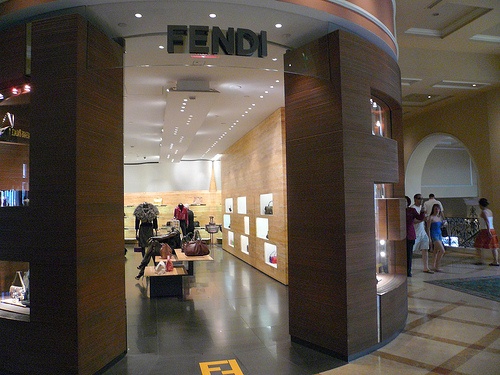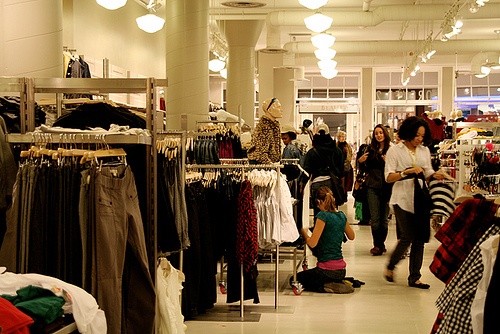- Home
- Blog
- Business Advice Retail Manipulation: How They Get You to Buy More (Part I)
Retail Manipulation: How They Get You to Buy More (Part I)
-
 3 min. read
3 min. read
-
 Xander Becket
Xander Becket Content Writer
Content Writer
- Xander is a Senior Internet Marketing Strategist at WebFX. You can find him riding his bike or longboard towards donuts.

Last Sunday night my fiancée Kate and I got a babysitter and went to Park City to cash in our Christmas gift cards. I don’t usually shop retail (especially for clothes), but the after-holiday specials cut out most of the markup.
On our way into the mall we got coffees at Starbucks. BTW I usually hate shopping.
But shopping + caffeine was actually exhilarating and productive.
My mind raced the whole time. I pounded out the ideas on my BlackBerry and, after decoding them later on, I had tons of ideas for new blog posts!
They all have to do with the tricks retail stores use to get you to spend more. The first realization came as we visited Forever 21.
Create Value through Scarcity

When you go into a high-end specialty store (like Fendi or Gucci) you never see tons of clothes.
All of the products are spaced out and sparse. It feels almost…empty.

Then go into Forever 21. It’s packed to the gills with merchandise. There’s something for every style, trend, and fashion. And there’s a much longer line at the checkout register.
Which wins?
Well both, but for different reasons.
You expect to see quality stuff when you shop at Gucci and Fendi.
And they lay out the store so sparingly to give you the (subconscious?) impression that there is a limited supply of product.
It’s Econ 101 to know that as supply decreases the value per item increases. Pre-entrance branding has already primed to expect product quality. You’ll be a little more willing to shell out $200 for those shoes when you only see 3 pairs in the whole store.
Forever 21 has no international branding to support a perceived-value game like the big boys.
So they slash the per-item margin and load the store up with tons of clothes. More choices at less cost means that you have a great chance of finding at least one thing that suits you.
They make their money when a ton of people buy one or two things. It doesn’t matter that you only spend $20 (rather than $200) because 1 in 3 people that walk in will do the same.
At Fendi it might be 1 in 10. Or 1 in 20.
The Difference
Forever 21 gives you the choice to find what you want, and Fendi says “Here’s what we have, and there’s not much to go around, so it’s worth paying a premium for.”
All of this, of course, is communicated subconsciously by the store layout.
Manipulations of your decision making process make it easier to part with your money. And there are tons more subtle ways retail stores do it.
Next week we’ll cover the sensory tricks stores use to lull you into a highly-suggestible state. And I’ll share my experience with being ‘brainwashed’ at the Gap.
-
 Xander is a Senior Internet Marketing Strategist at WebFX. You can find him riding his bike or longboard towards donuts.
Xander is a Senior Internet Marketing Strategist at WebFX. You can find him riding his bike or longboard towards donuts. -

WebFX is a full-service marketing agency with 1,100+ client reviews and a 4.9-star rating on Clutch! Find out how our expert team and revenue-accelerating tech can drive results for you! Learn more
Try our free Marketing Calculator
Craft a tailored online marketing strategy! Utilize our free Internet marketing calculator for a custom plan based on your location, reach, timeframe, and budget.
Plan Your Marketing Budget

Looking for More?
Get expert ideas, industry updates, case studies, and more straight to your inbox to help you level up and get ahead.
"*" indicates required fields
Try our free Marketing Calculator
Craft a tailored online marketing strategy! Utilize our free Internet marketing calculator for a custom plan based on your location, reach, timeframe, and budget.
Plan Your Marketing Budget




